Published
- 06:00 am

The Chargeback Company™, known as Chargebacks911® in the United States, announced today that it has hired chargeback expert Craig McClure from Visa. He joins during the rollout of Visa Claims Resolution (VCR) and will be responsible for equipping clients with the regulatory knowledge and practical skills needed to reduce chargebacks with the payment schemes.
McClure joins as Director, Relationship Management, and will manage The Chargeback Company’s extensive European merchant and banking customers. He brings over a decade of experience at issuing banks and card schemes, including Visa, Lloyds Banking Group, and Bank of Scotland (HBOS).
McClure was responsible for one of Visa’s largest accounts in Europe, most recently helping Visa customers sign-off on VCR. Working right at the source of this industry-wide change, McClure ensured that organisations were prepared for the new policies and procedures for dealing with chargebacks and payment disputes.
Monica Eaton-Cardone, CIO and co-founder of The Chargeback Company, said: “We’re very excited to have Craig join us in making chargebacks a problem of the past. He has been at the front line of chargeback reduction efforts by banks and card schemes and is the go-to guide on how to manage VCR, as well as Mastercard’s updates which will roll out later in the year. He will prove an invaluable resource for an industry undergoing a transformation in authorisation and clearing. We’re delighted to have him on board.”
Craig McClure, Director of Relationship Management at The Chargeback Company, added: “Having worked directly on a number of the chargeback changes now coming into play, I’m looking forward to guiding The Chargeback Company’s growing client base through significant payment scheme and regulatory changes. The Chargeback Company’s leadership team includes former merchants and industry heavyweights from Mastercard. I feel I’m in the perfect environment to deliver meaningful change for both merchants and issuers, eliminating the disconnect between banks and merchants that has hindered progress.
“Having seen these challenges first-hand on the issuing side, as well as at the card schemes, I’m looking forward to closing this gap and helping global clients cut their chargebacks once and for all.”
VCR aims to increase the efficiency with how chargebacks are processed. Consolidated reason codes are designed to stop confusion on why a chargeback has been filed, although merchants will have a shorter timeframe in which to respond to chargebacks. Visa also hopes to gain more insight into the causes of chargebacks by levying fees for merchants who fail to address a chargeback.
Related News
- 07:00 am

LitiGate, a Tel Aviv-based legal tech venture, is collaborating with three leading law firms to further develop and test a litigation platform that uses artificial intelligence ('AI') to automate legal research and argument assessment in relation to High Court applications.
Taylor Wessing, Baker McKenzie and Mishcon de Reya (MDR LAB) have been approached to collaborate with LitiGate for their extensive experience in dispute resolution and continued investment in technology.
Founded by experienced litigator Nimrod Aharon and AI expert Guy Uziel, LitiGate aims to revolutionise the conduct of litigation by delivering contentious legal services faster, at less cost and with improved accuracy.
The platform uses state of the art machine learning algorithms to autonomously review arguments, suggest counter arguments and fall-backs, and recommend preferred procedural steps.
All three firms will be providing their expertise and resources to assist LitiGate with further development and testing of the platform.
Nimrod Aharon, CEO of LitiGate, says:
"These are exciting times of revolutionising legal research as we know it. Our partners do not settle for 'our lawyers are smarter than the ones across the street'; they take proactive actions to reduce fees and find innovative ways to deliver top-tier legal services to their clients.
"Together with our partners, we have formed a unique community of highly ranked global law firms, investing their expertise and resources to provide the first AI arguments analysis platform."
Laurence Lieberman, partner at international law firm Taylor Wessing, says:
"Technology, and AI in particular, is transforming the legal profession, and the conduct of litigation is no exception. We are constantly looking for innovative solutions that will maximise efficiency to ensure the best outcomes for our clients, and reduce the overall cost of litigation.
"Collaborating with LitiGate is a perfect fit for us, and forms part of our wider commitment to investing in technology. We are excited to be working with the LitiGate team and other partner firms, to help explore the benefits of this potentially game-changing product for our disputes and investigations team."
Ben Allgrove, Global R&D Partner at Baker McKenzie said:
"Technology and AI are transforming the delivery of legal services and our partnership with LitiGate is a great opportunity for us to help them develop cutting edge legal tech solutions, and ultimately shape the future of law. This collaboration is a core part of our innovation strategy and we look forward to embarking on this journey with LitiGate."
Nick West, Chief Technology Officer at Mishcon de Reya, says:
“We’re delighted to have welcomed Nimrod, Guy and the LitiGate team to join our current MDR LAB cohort and eagerly anticipate getting to know them, to understand what their technology can do and to help them perfect their product. Equally, we’re excited to collaborate with colleagues from Taylor Wessing and Baker McKenzie - as many have commented before, we think that collaboration amongst firms can only help to accelerate the pace of change in legal.”
Related News
- 04:00 am
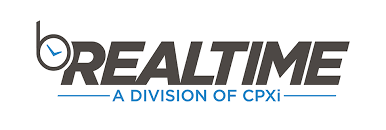
bRealTime and Clearstream have merged to form EMX, a new programmatic marketplace. EMX will offer more powerful media solutions across supply, demand and data to publishers, advertisers, ad tech providers and agencies, including increased efficiencies, heightened transparency and an overall lift in ROI.
EMX combines the services of bRealTime, an automated global marketplace specializing in direct-to-consumer access through technologies like header bidding, with Clearstream, the leading deterministic data and decisioning platform for advertisers and brands. As an integrated business, EMX gives clients access to a unified supply chain providing access to more audiences on all screens, including TV, OOH, mobile and desktop.
Mike Zacharski, formerly CEO of bRealTime, has been named CEO of EMX. Brian Mandelbaum, previously CEO of Clearstream, will assume the role of President & Chief Strategy Officer. They will lead the ongoing development of EMX's industry-leading products, which combine premium supply, demand and data under one solution. The new EMX business is supported by a team of veteran digital media practitioners, data scientists and technologists.
"The digital marketplace has given marketers the power to reach and engage with consumers in seemingly limitless ways, however, with its meteoric rise, it has brought a new breed of challenges - from fraud, excessive complexity and cost, to black box behavioral data sets," said Zacharski. "With EMX, we have pioneered a new industry standard that helps solve for these issues."
Additional benefits of EMX include:
- Increased scale, increased transparency and increased ROI for all parties.
- Publisher and advertiser transactions are united in a single space, giving publishers access to more advertising partners, and advertisers access to more publisher partners, increasing scale for both.
- Parties have greater oversight of the entire programmatic process, as well as access to more data about how their content and strategies are performing, increasing transparency and safety for both.
- Increased transparency and data access allows both parties to better optimize their outputs, maximizing ROI for all.
- Simplifies the programmatic transaction process for clients with bespoke tools and solutions.
Continued Zacharski: "By bringing our proprietary tools and talented specialists together, we've been able to create a marketplace using best-of-breed technologies that deliver genuine ROI for both publishers and advertisers."
Related News
- 04:00 am
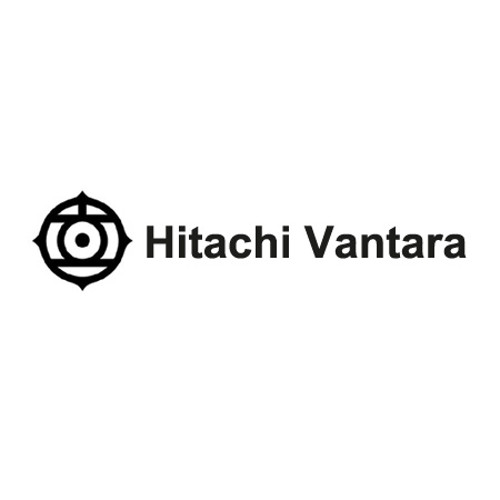
Hitachi Vantara, a wholly owned subsidiary of Hitachi, Ltd. (TSE:6501), today introduced new innovations to drive data center modernization. Hitachi unveiled new high-performance storage systems in the industry's only storage family with a 100% data availability guarantee, and integrated, and cross-platform AI-powered analytics and IT automation software. The all-new, all-flash and hybrid Hitachi Virtual Storage Platform (VSP) systems and AI operations software give customers unprecedented agility and automation to reduce costs and increase operational efficiencies-the foundation for any modern data center initiative. Developers will gain increased flexibility and can now run more workloads in a single system through Docker and Redhat Openshift container integration with Swarm and Kubernetes orchestration.
"As artificial intelligence and machine-learning technologies mature, enterprise storage vendors have an opportunity to provide considerable assistance to customers on their journey to autonomous operations," said Eric Burgener, research vice president of Storage at IDC. "Vendors like Hitachi Vantara, with their enhanced AI operations portfolio, are leveraging AI/ML to simplify infrastructure management while improving platform reliability, infrastructure efficiency and the ability to meet service level agreements."
Intelligent Operations
As data center operations become more complex, operational efficiencies can deteriorate and the risks of downtime or data loss increase. Hitachi Vantara is introducing the industry's most advanced AI operations software portfolio, which includes Hitachi Infrastructure Analytics Advisor, Hitachi Automation Director and Hitachi Data Instance Director to deliver a more agile data infrastructure.
Hitachi Infrastructure Analytics Advisor (HIAA) delivers an AI-powered "brain" to provide deeper data center insights by looking across the data path, including virtual machines, servers, networks and storage. HIAA uses machine learning to more efficiently optimize, troubleshoot and predict data center needs. New HIAA capabilities include:
- Predictive analytics: AI mines telemetry data to predict when new storage purchases will be required, improving budget planning and helping to prevent performance dips. Machine learning analyzes all resources associated with storage to help ensure the right resource is purchased.
- 4x faster root-cause analysis: A patented AI engine analyzes telemetry data and configuration changes across the data path to isolate issues and uses a new heuristic engine to recommend resolution. Integration with Hitachi Automation Director allows immediate fixes based on best practices.
Hitachi Automation Director (HAD) software provides an "engine" for orchestrating the delivery and management of IT resources so that teams can focus on innovation. A highly customizable solution, HAD automates core IT service delivery routines including virtual machine, network zoning and storage and data protection tasks to reduce errors that impact uptime, customer experiences and return on investment (ROI). HAD has been enhanced to:
- Integrate with IT service management (ITSM) tools, including the ServiceNow® platform, for improved tracking and control of IT resource delivery.
- Improve REST API integration for provisioning of third-party resources, including storage.
- Take commands from HIAA for issue remediation and storage configuration data.
- Automate the setup of Hitachi Data Instance Director (HDID) data protection to safeguard against data loss or downtime.
The new integrations between HIAA, HAD and HDID are part of Hitachi's growing AI operations initiative to help customers begin the journey to autonomous operations. These offerings are now available both independently and packaged together with Hitachi VSP to help customers easily get the tools that drive data center modernization.
"VMware and Hitachi are working together to bring a new operational model to the data center," said Lee Caswell, vice president, Product, Storage and Availability Business Unit, VMware. "Our joint integration work helps Hitachi VSP customers seamlessly leverage many VMware solutions including VMware vSphere, Virtual Volumes and Site Recovery Manager to simplify daily operations and disaster recovery scenarios. And by sharing telemetry data between Hitachi AI operations software and vCenter-native management tools, we help customers digitally transform their business and realize the power of modern infrastructure."
Agile Data Infrastructure
Data center modernization begins with a rock-solid foundation for consistent delivery of data at high speed and low latency, with support for diverse workload requirements and multi-cloud integration. Hitachi's new all-flash VSP F series and hybrid-flash VSP G seriessystems support an agile data infrastructure with the industry's only 100% data availability guarantee and up to 3x more IOPS performance and 2.5x greater scalability compared to prior VSP models. This means customers can expect faster analytics processing and application performance - fueling a faster return on data. Cloud and container integration allow more workloads to run on a single system, while helping to eliminate data silos and support new workloads.
The new enterprise-class Hitachi VSP models include the all-flash VSP F700 and VSP F900 and the hybrid flash VSP G700 and G900 systems. To reach a broader range of customers, Hitachi is introducing new midrange models. They include the VSP F350, F370, G350 and G370 systems. The systems are powered by the next generation of Hitachi Storage Virtualization Operating System, SVOS RF, which has been re-architected for increased performance, scalability and data efficiency. All new VSP systems are backed by Hitachi's new flat service model and come with a Foundation software package that includes Hitachi's proven infrastructure analytics and copy data management software. All new Hitachi VSP systems are available now.
The new systems have significant improvements compared to prior VSP models:
- Performance scalability: Scaling to more than 2.4M IOPS and 41GB/s of bandwidth.
- More efficiency: Up to 70% more IOPS per core for increased price/performance.
- Greater consolidation: 8x more volumes and one million snapshots per system.
- Improved data efficiency: Up to 3.4x faster deduplication and 5x faster SVOS-based compression.
"Hitachi is helping the world's business and IT leaders respond to modern data challenges by leveraging predictive analytics and automation as part of their larger data management and digital transformation initiatives," said Iri Trashanski, senior vice president, Infrastructure and Edge Products at Hitachi Vantara. "With the criticality of data in our customers' environments, there is no room for good-enough storage technology or data-silos created by weak infrastructure. The technology announced today will help create the agile data infrastructure and intelligent operations our customers need to drive transformation."
Related News
- 09:00 am

CSPi's Myricom nVoy Series leverages the Fortinet Security Fabric API to ingest intrusion alerts from FortiGates and automatically compare them against identified critical assets. On identifying a breach, the nVoy solution triggers the extraction of a detailed file containing all recorded conversations between the intruder and affected devices, and will immediately dispatch them to the appropriate resources. Having this data in near real-time enables InfoSec teams to begin a highly focused and effective breach investigation that can be completed in hours, and not the weeks or months experienced today.
"CSPi actively records all data going to and from databases and file shares storing PII data. If those systems have been breached, organizations can search the conversations and locate the exact exposed records," said Gary Southwell, General Manager, CSPi. "We actively utilize the Fortinet API, allowing our system to access FortiManager to pull relevant alerts into our solution to trigger automated searches of bad actors communicating with the protected assets - to automatically produce the detailed evidence of the breach."
In addition to the automated identification and notification of breaches, the nVoy solution provides another sizable advantage to InfoSec resources - maintaining compliance with data privacy regulations. As more data privacy regulations are created, often with stringent breach notification deadlines - such as 72 hours dictated in GDPR or 23NYCRR 500 - it is critical for InfoSec teams to receive insight into the exact data record accessed, if any. The Myricom nVoy solution enables that through detailed reporting.
CSPi's complementary solution, ARIA(TM) Software Defined Security (SDS) gives organizations the capability to automatically Secure DevOps environments. ARIA provides application developers with easy connectors to apply advanced security features, such as encryption, during their development process. In addition, ARIA supports the InfoSec team by automatically applying security policies to activate any applied security features. Having the detailed reporting as delivered by the nVoy solution to prove that any accessed data was encrypted can avoid the need for compliance reporting. The coupling of FortiGate, nVoy and ARIA provides a complete, proactive security solution that enables organizations to be fully prepared when the inevitable breach occurs.
Related News
- 07:00 am
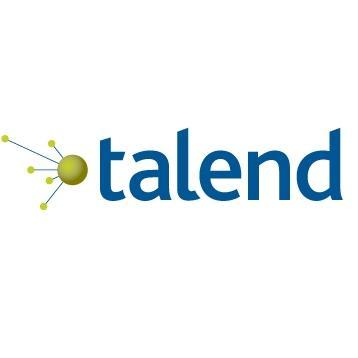
"The combination of Knowledgent's industry expertise with Talend's data integration and MDM capabilities on top of Amazon Web Services' cloud storage and database platforms, is a powerful solution for delivering an end-to-end view of patients and research," said Rolf Heimes, senior director, Global Technology Alliances. "We're excited to partner with Knowledgent on bringing this solution to market that promises to help healthcare and life sciences companies more effectively analyze data for better business and patient outcomes."
According to recent Harvard Business Review article, more than 47 percent of data has serious integrity issues causing business analysts to spend 80 percent of their time on searching for and preparing data. Kartridge MDM 360 includes visualization tools that help interpret data hierarchies and contact relationships. This provides a central point of control for data governance and stewardship functions, which helps improve data quality and compliance. Once data quality, curation and governance functions are consolidated, Kartridge MDMD 360 then combines that data with analytical engines and self-service capabilities to contextualize it in a role-based, business employee way. By combining predefined data models, data quality and self-service data discovery, Kartridge MDM 360 empowers data consumers with the information they need, while delivering a trusted 360-degree view of the enterprise. Utilizing AWS S3, Aurora, and Neptune databases, Kartridge MDM 360 can quickly incorporate multiple data resources and scale to support multi-divisional enterprise needs.
"Healthcare and life sciences organizations need effective ways to transform exploding volumes of diverse real-world data into real-world evidence they can leverage with analytics, cognitive computing and the cloud to deliver unprecedented patient value," said Chris Blotto, CIO, Knowledgent. "Kartridge MDM 360 provides an easy-to-deploy, budget-friendly solution for highly regulated healthcare and life sciences organizations, as well as of other industries with customer-centric data needs."
Using Kartridge MDM 360, healthcare and life sciences users can easily locate, combine, cleanse, qualify, and analyze data from a diverse array of sources including EHR and insurance claims systems, clinical trials, patient monitoring devices, smartphones, and social media. Potential use cases for Kartridge MDM 360 include:
- Clinical trial innovation
- Fraud, waste, and abuse analysis
- Scientific search
- Treatment adherence
- Patient recruitment
- Drug responsiveness
- Adverse event processing automation
- Next best action
- Regulatory intelligence
For more information on Knowledgent's Kartridge MDM 360 visit https://knowledgent.com/kartridgemdm360/ or register here to view the live-streamed keynote presentation by Chris Blotto, CTO for Knowledgent, on Wednesday, May 9 at 9:45 am ET. Additional information on Talend and its complete portfolio of offerings can be found at www.talend.com.
Related News
- 09:00 am
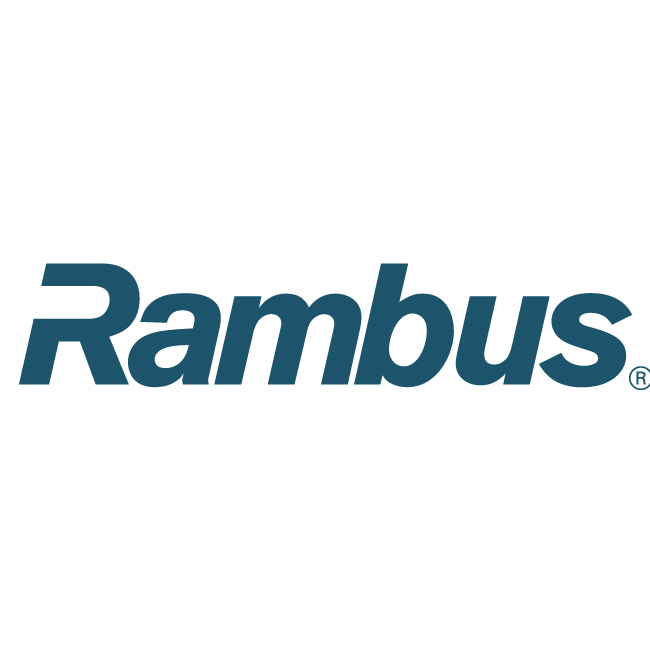
Rambus Inc. today announced the launch of its Payment Account Tokenization solution to secure account-based transactions, such as automated clearing house (ACH) and real-time payments. The solution will enable central banks and clearing houses to replace sensitive account numbers with unique tokens and reduce the impact of fraud for transactions including direct credit, direct debit and person-to-person (P2P) payments.
Reduce account fraud through tokenization
Payment Account Tokenization secures card payments by replacing the valuable account credentials with a cryptographic token. This process significantly reduces the risk and impact of account-based fraud as the foundation of a safe and secure instant payments framework. When implemented by a centralized body, like a central bank, Payment Account Tokenization reduces fraud and enables key use cases like P2P, direct credit, and push payments in real-time.
“Tokenization has already been proven successful in securing mobile payments worldwide. Our Payment Account Tokenization does the same for real-time payments, enabling account-based transactions to be processed faster and safer than ever before,” said Bret Sewell, SVP and general manager of the Rambus Security Division.
451 Research principal analyst, Jordan McKee notes, “Digital has paved the way for fast and easy payment experiences, prompting a rise in account-based transactions. Fraudsters have made note of this trend and are increasing their focus on account credentials given their growing disbursement across many locations, including e-commerce websites, mobile and P2P wallets, invoices and payroll. To protect customers and thwart fraudulent attacks, businesses must implement security tactics that serve to eliminate the use of sensitive credentials in the transaction flow.”
Managing account data, faster and safer
The introduction of real-time payments increases risk for financial institutions, as they now have seconds instead of days to identify fraudulent transactions. By removing account numbers from the transaction process completely, tokenization can significantly reduce the risk and impact of account-based fraud and create secure real-time payments frameworks.
Key features of Rambus Payment Account Tokenization
The Payment Account Tokenization solution consists of a number of primary features, including:
- Account-based tokenization eliminates the need to store and transmit sensitive account information, alleviating the risk of stolen credentials being used to commit transactional fraud. The system integrates with existing infrastructure and tokens route normally through the payment network.
- Life cycle management enables banks to link, suspend, (re)activate or unlink tokenized bank account numbers.
- Domain controls limit token usage to a specific channel, merchant or spending limit by applying a set of parameters. Any use of the intercepted token outside of its set parameters would immediately flag as fraudulent and render the token useless.
- Cryptogram protection generates application cryptograms prior to a payment and validates them during a transaction. A cryptogram is a fingerprint of the transaction, holding elements of the originator, recipient, financial institution and the transaction.
- A token vault is a secured repository, or database, that establishes and maintains the payment token to Sending/Receiving Account number mapping. The token vault is the only area in which the token can be mapped back to the consumer’s original card details. All token vaults comply with Payment Card Industry (PCI) specifications.
Related News
- 03:00 am

Motion Gestures, a Canadian machine learning startup specializing in gesture recognition software, today launched a breakthrough platform for gesture recognition applications. The software is a significant advance over conventional approaches and dramatically reduces the time, cost, and effort of building a gesture interface for any system, device, or app. It supports gesture recognition with a wide variety of motion, touch, and vision sensors and can be deployed on cloud, gateway/hub, and embedded platforms.
The patent-pending technology defines the state-of-the-art in gesture recognition in six fundamental ways:
- No need to code custom gestures. Just draw the desired motion trajectory on a mobile or tablet screen and edit it.
- No need to collect data for training gesture models. The system generates data automatically for model training.
- No need to build gesture models for different sensors. Once a model is ready, utilize it with any supported sensor.
- No need to build gesture models for different platforms. Once a model is ready, deploy it on any supported platform.
- No limitation in gesture choices. Choose from a library comprising letters, numbers, shapes, symbols, and rotations.
- No complicated testing procedures. Test any gesture using your smart phone and receive comprehensive feedback.
Motion Gestures also announced today closing of $1.65 million USD in seed investment. China Canada Angels Alliance (CCAA) led the round that also included participation from Golden Triangle Angel Network (GTAN), Keiretsu Forum, and Propel(x) The financing will be used to further the development of company's gesture recognition platform and initiate international marketing.
Alan Yang, Vice President of CCAA, said: "Gesture recognition is the new frontier of human machine interaction. We are very impressed with Motion Gestures' platform's ability to popularize and de-mystify gesture interaction. We see major applications of its gesture recognition software in key business verticals, such as wearables, automotive, mobile phones, consumer electronics, home automation, medical devices, virtual reality, toys, drones, and robotics, to name a few."
"We believe gesture recognition as a human machine interface is today where voice recognition was five years ago," said Kashif Kahn, CEO and Co-Founder of Motion Gestures. "We want to dominate this emerging space by offering a powerful solution that eliminates the difficulties of building a gesture interface and helps bring gesture control into consumer mainstream. We invite developers to experience the power of our breakthrough platform via use of a free developer license."
Related News
- 07:00 am
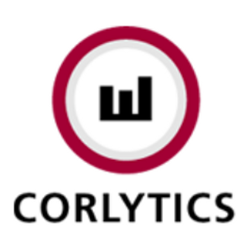
Two highly innovative technology firms, Corlytics and Digital Reasoning, announced today that they will collaborate on an integrated regulatory intelligence and surveillance offering. Financial institutions are constantly assessing whether they can better control their risks. The combination of Corlytics’ deep understanding and insight of the regulated financial market with Digital Reasoning’s best-in-class artificial intelligence technology for conduct surveillance will enable financial institutions to develop new detection strategies and address blind-spots in risk coverage. The combined solution will be offered to Corlytics and Digital Reasoning clients globally.
Financial firms are seeking opportunities to introduce enhanced process, programme and technology solutions to meet changing regulatory expectations, and improve surveillance efficiency and effectiveness. According to analysis by Tricumen and PwC, firms have seen headcount in the front office dedicated to a control function grown by about 21% over the past six years. However, limitations with time, budget and technology mean firms often lack formal processes to optimise alerts and identify new risk areas.
“Monitored employees learn how surveillance works and can learn evasion tactics,” said Brett Jackson, CEO of Digital Reasoning. “Hence, misconduct typologies can be expected to evolve, sometimes quite rapidly. Corlytics continuously scans a diverse set of authoritative data sources that can inform compliance teams how surveillance strategies are evolving, and the impact of failing to detect certain types of misconduct. The ability to automate global regulatory domain knowledge and prioritise employee behaviors based on risk intelligence is exactly the kind of elegant value-add Digital Reasoning’s customers are expecting as they turn to AI technology to implement more effective controls.”
John Byrne, CEO of Corlytics explained the depth of intelligence already held by his company: “Every time a regulator communicates to the market or publishes a document, we break that information down, classifying its industry impact and adding it to our intelligence. Speeches, industry guidance, thematic reviews and business plans all yield insight into regulatory intent. Combined with our global enforcements analysis, we can offer a single end-to-end source of regulatory assessment risk of regulatory change information. This insight, combined with Digital Reasoning’s market leading AI-enabled conduct surveillance technology, is set to be a game changer for regulated firms.”
Related News
- 07:00 am

Organizers of the second Bitcoin, Ethereum, and Blockchain Super Conference (which is being held in September at Dallas) are running a special promotion. Every attendee who buys their ticket before 9:59pm each day will be put into a complimentary raffle, where one lucky winner will receive $300 of Ethereum transferred to their wallet immediately. (Considering that, on a typical day, ticket sales range from four to ten, the odds of winning stand at between 10% and 25%.)
“I am stoked about Ethereum’s rally this past month”, said Mr. Jacobs. “Ethereum is up more than 700% year-on-year, and some insiders believe this number two crypto will blow right on past Bitcoin, straight into number one cryptocurrency status. As always, it pays to get in while the gettin’s good, so I’ve decide to run this special promotion. Every day, until Sunday, we’re giving away $300 of Ethereum at 10pm. Every person who bought a ticket will be put in a hat, and we’re going to draw ONE name. If you win, we’ll transfer $300 of Ethereum into your wallet right away.”
This second conference – which follows on from the Bitcoin, Ethereum, and Blockchain Super Conference that took place in February – is being held in Dallas on September 14th, 15th, and 16th.
Headline speakers include:
- Tim Draper – the billionaire venture capitalist whose firm successfully bet on Skype, Twitter, Tesla, and Space X before they got big, who predicts that Bitcoin will hit $250k by 2022.
- Randi Zuckerberg – Founder & CEO of Zuckerberg Media & early Facebook executive, who is now leading several future-tech initiatives, and is one of the most well-connected future-tech professionals in Silicon Valley.
- Mark Yusko – the Wall Street money man who not only runs a $4.5 billion hedge fund, but is also betting $500 million of “smart money” into cryptocurrency and blockchain assets.
- Nick Spanos – the founder of Blockchain Technologies Corp and an early member of the Bitcoin scene who was featured on Netflix’s Banking on Bitcoin movie.
- David Hirsch – an enforcement attorney from the SEC, who’s going to talk about how the world’s most important financial regulator is softening its stance towards blockchain.
- Lyn Ulbricht – the mother of Ross Ulbricht, who was unjustly imprisoned for his role in creating the Silk Road marketplace and democratizing commerce.
- And many others.
The overarching theme of all their talks, and the entire conference, will be the next crypto and blockchain market cycle. All signals indicate that crypto is heading back into bull territory, and when the new market cycle begins, it’s going to make a new wave of blockchain investors seriously rich. This conference is about discovering how “smart money” is already getting in before the next rush.
Tickets to the Super Conference usually cost $897 but are available a special Summer price of $597:
https://www.thefuturetechexpo.com/register/
Press contact:
Richard Jacobs
organizer@thefuturetechexpo.com
(888) 448-4590
About the Bitcoin, Ethereum, and Blockchain Super Conference II:
This three-day conference will be held at the Kay Bailey Hutchison Convention Center in Dallas from Friday September 14th to Sunday September 16th, 2018. We are expecting more than 1,000 attendees, at least 50 headline speakers, and upward of 50 exhibitors – with talks from founders, developers, and early-stage investors of cryptocurrencies and blockchain startups, including many that are planning ICOs throughout the last quarter of 2018 and 2019. The focus will be on the next crypto market cycle.
More information is available at:









